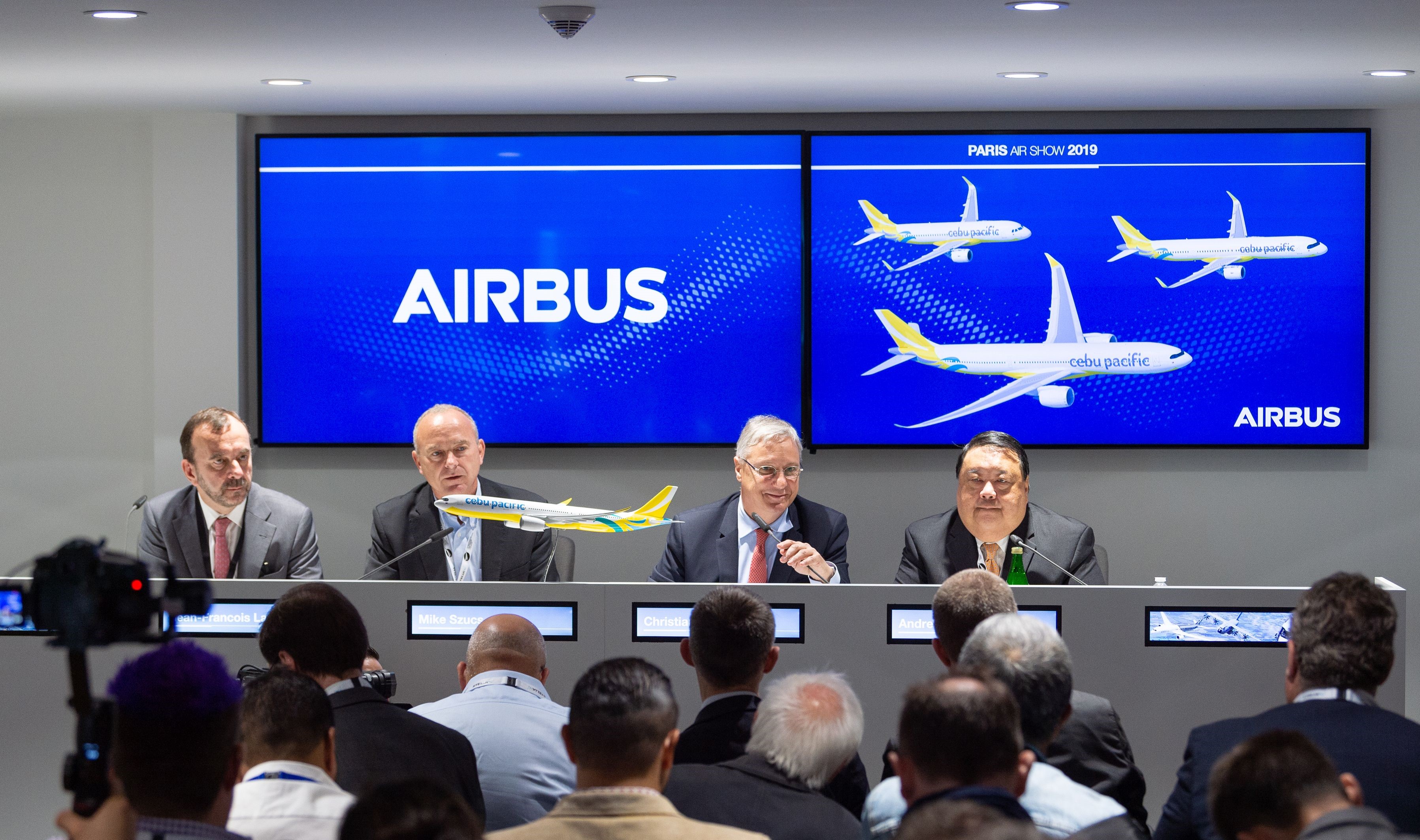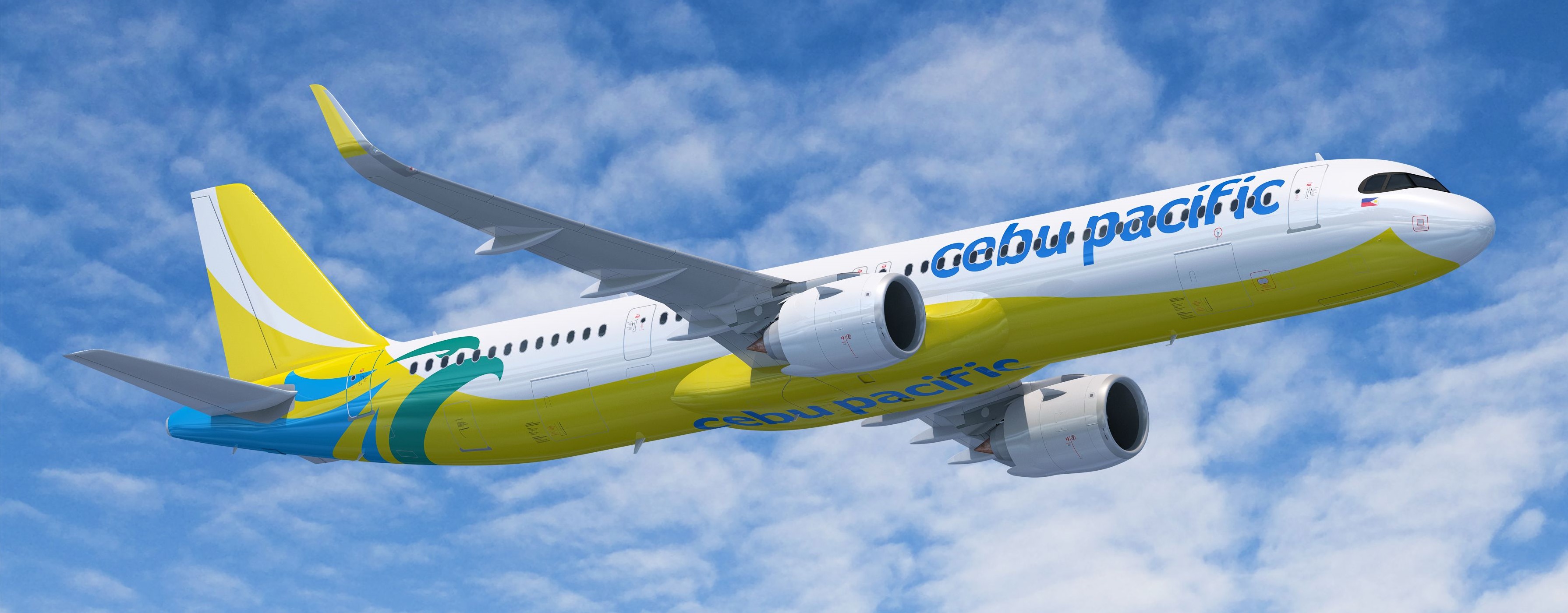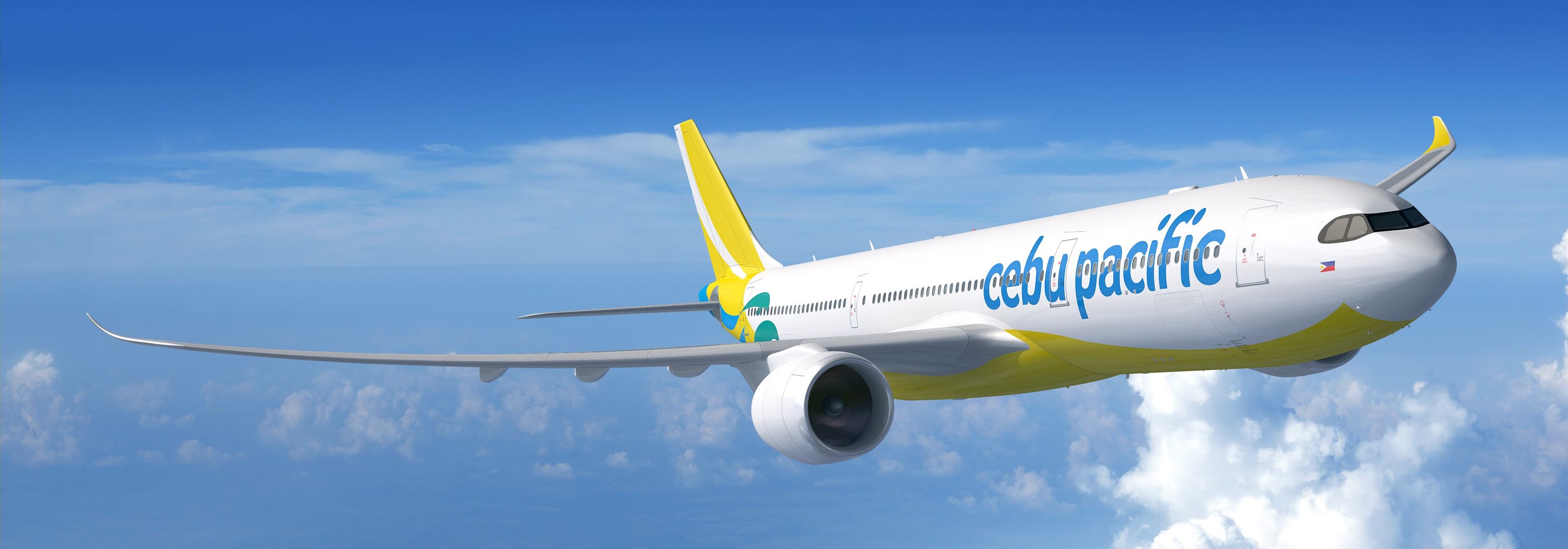Highlights:
- Cebu Pacific has placed an order for 16 A330-900neos which it will configure with a newly available maximum of 460 seats but will lack the range to launch long haul flights to the continental US;
- The carrier has also has ordered 10 A321XLRs, which it will configure with 240 seats, and five A320neos, which it will configure with 196 seats;
- Cebu Pacific is using high density aircraft to increase capacity at the congested Manila Ninoy Aquino International airport without increasing slots.
The Philippine low cost airline signed an MOU at the 18-Jun-2019 Paris Air Show for 16 A330-900neos, 10 A321XLRs and five A320neos. This is Cebu Pacific's second major order for neo aircraft following its 2011 commitment to 32 A321neos, two of which have so far been delivered. The airline also has received an A320neo, the first in a five-aircraft lease deal; all five of these are being delivered this year and are in addition to the 47 aircraft now ordered from Airbus.

Cebu Pacific currently operates 48 ceo aircraft - consisting of 33 A320ceos, seven A321ceos and eight A330ceos. It is in the early stages of replacing all its A320ceos, primarily with A321neos and to a lesser extent with A320neos. It will also begin replacing in 2021 its A330-300ceos with A330-900neos. Both swaps will be completed by the end of 2024, giving Cebu Pacific an all-neo fleet except the seven A321ceos, which were all delivered last year.
The fleet changes result in significant capacity increases or upgauging. Cebu Pacific is currently configuring its A321neos with 236 seats compared to 180 seats on its A320ceos, resulting in a 31% increase. Its seven A321ceos have 230 seats, resulting in a 28% increase, and the airline plans to configure some of its future A321neos with the maximum 240 seats, resulting in a 33% increase.
A320ceos replaced with the five 188-seat A320neos being delivered this year result in a 4% capacity increase. Cebu Pacific plans to configure the five additional A320neos it just ordered with 194 seats, a newly available maximum for the type, resulting in an 8% increase.

The airline will configure its A330-900neos with 460 seats, representing a 6% increase compared to is 436-seat A330-300ceos. The 460 configuration is new maximum for the A330 family as currently the maximum is 440 seats.
Cebu Pacific is also doubling its widebody fleet as it takes 16 A330-900neos, giving it an opportunity to upgauge more regional flights from narrowbody to widebody aircraft. It now mainly uses its A330-300ceo fleet on regional flights (domestic and international within east Asia) as it has only three long haul routes - Dubai, Melbourne and Sydney. The airline plans to continue mainly using its widebody fleet on short haul to medium haul routes (up to five hours) as the fleet expands and is upgauged.
[perfectpullquote align="full" bordertop="false" cite="" link="" color="" class="" size=""]CAPA LCCs IN NORTH ASIA SUMMIT
 Cebu Pacific CEO advisor Mike Szucs, who just got back to the Philippines from the Paris Air Show, will be speaking at the CAPA LCCs in North Asia Summit in Cebu on 24-Jun-2019. The new order and the airline's ambitious growth plans, which includes major expansion in North Asia through upgauging existing flights and new routes from secondary cities, will be discussed in a fireside chat and a subsequent panel on the North Asian LCC market.[/perfectpullquote]
Cebu Pacific CEO advisor Mike Szucs, who just got back to the Philippines from the Paris Air Show, will be speaking at the CAPA LCCs in North Asia Summit in Cebu on 24-Jun-2019. The new order and the airline's ambitious growth plans, which includes major expansion in North Asia through upgauging existing flights and new routes from secondary cities, will be discussed in a fireside chat and a subsequent panel on the North Asian LCC market.[/perfectpullquote]
Cebu Pacific looked at 787-9s, which would have also been mainly used regionally while also providing flexibility to launch nonstop flights to the mainland North America. The airline still aspires at some point to launch flights to Los Angeles and San Francisco - which have huge Filipino populations - and potentially Vancouver but its priority is on growing capacity and reducing seat costs within Asia Pacific.
The LCC will not be able to launch services to mainland North America using the A330-900neo but has the flexibility still to switch some of its orders to the A330-800neo, which could operate to the west coast in a high density all economy configuration without any payload limitations. The challenge is the A330-800neo is smaller and therefore the unit seat costs are higher, which goes against the typical Cebu Pacific strategy. A sub-fleet for long haul flights would also not be ideal and if A330-800neos were operated regionally seat economics would be sacrificed.

Cebu Pacific adopted an upgauging strategy several years ago in order to maximise its slots in Manila as well as several of its destination airports, where slot constraints have also become increasingly common. Upgauging also reduces its already very low unit costs, enabling it to stay true to its low fare model and compete effectively.
Congestion at Ninoy Aquino International airport has not eased and in fact has been worsening, making it unlikely more slots will become available anytime soon. The Manila market continues to grow, driven by a fast-expanding economy and middle class.
Cebu Pacific is sensibly pursuing growth in Manila through upgauging while also growing in secondary airports, particularly Clark and Cebu, as the overall fleet expands. The airline plans to use the 240-seat A321XLR to launch thin long-haul routes from secondary cities such as Cebu-Sydney. It has time to decide on the network for this new long-range neo variant as first delivery is not until 2024 - at which point the fleet renewal will have been completed, providing an opportunity perhaps for some experimental growth.